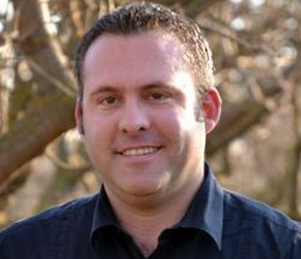News Articles
Wednesday, June 7, 2017
Lawmaker Considering Ways to Disrupt Business Model Related to Capping
- State: California
- Topic: Top
- - Popular with: Legal
- - 10 shares
The criminal charges in a $300 million capping scheme announced Monday allegedly stem from a business model used to defraud California’s workers’ compensation system that state lawmakers last year took steps toward dismantling.

Assemblyman Adam Gray
But the new law and the announcement of criminal charges in several alleged pay-for-play schemes doesn’t appear to have shut down the accused cappers.
WorkCompCentral on Tuesday was able to arrange representation by an attorney through one of the companies named in the criminal charges that the Orange County District Attorney’s Office filed Monday, by posing as injured worker.
The scheme the Southern California prosecutors said they uncovered involved using toll-free phone numbers to recruit injured workers as clients for attorneys, and patients for doctors. It’s a business model Assemblyman Adam Gray, D-Merced, said he is trying to disrupt.
“The same tactics are used by the folks that we think are engaged in fraudulent behavior,” Gray said during an interview Tuesday.
Gray authored AB 1244 in 2016, which included provisions requiring the Division of Workers’ Compensation to suspend providers who have been convicted of defrauding the comp system or another health care delivery system such as Medicare or Medicaid. The bill also requires a lien-consolidation proceeding to determine whether suspended providers will be allowed to pursue payment on any liens they own.
Another provision in AB 1244 prohibits payment for legal services provided before the injured worker signs a disclosure form that identifies where the claim will be filed and submits the form to the Workers’ Compensation Appeals Board. The bill also requires attorneys to sign statements under penalty of perjury indicating that they interviewed the workers they’ve taken on as clients.
Gray said suspending bad actors who have been convicted of defrauding a health care system was the obvious fix in AB 1244.
“Past that, we looked at this other fraudulent scheme that used these phone banks in Mexico that call and try to find injured workers, then the doctors and attorneys would basically collude to get paid, and the settlement would happen because the insurance companies don’t want to fight it,” he said. “They kept everything at the right numbers where they could skim the cream off the top, and the workers basically didn’t get adequate medical care and with the settlement signed off any future medical care, and the lawyers and doctors got rich.”
This year, Gray introduced AB 221, which would provide that employers aren’t liable for medical costs on occupational disease or cumulative trauma claims unless certain conditions are met. Employers would be liable if they accepted the injury as compensable. And they would be liable if the WCAB or a qualified medical evaluator determined the claimed injury was caused by employment.
The bill also would provide that employers aren’t liable for liens filed on cumulative trauma and occupational disease claims unless one of the above conditions are met, or the claim settles for at least $25,000.
The Assembly Insurance Committee did not pass the bill in May. Only three members of the committee voted in support of the measure, which required seven votes to move out of the committee.
While the bill is technically dead, Gray said he isn’t walking away from the proposal.
“I have no intention of dropping the issue,” he said. “I made a strong case for a bill I thought made sense.”
Gray said he wasn’t swayed by opponents who argued that AB 221 could have unintended consequences, but haven’t identified what those possible unintended consequences might entail.
He said no one has identified a legitimate claim that would be disallowed under provisions in the proposed bill. He said he told opponents he would drop the bill if they provided a real example of a legitimate case that would be prohibited under the bill, and the “offer still stands today if somebody can actually produce a real case.”
Gray’s bill could have also addressed a nagging problem in the increased frequency of cumulative trauma claims filed against California employers. The Workers’ Compensation Insurance Rating Bureau said in its 2016 State of the System report that the percentage of indemnity claims alleging cumulative trauma increased to 17.9% in 2014 from 12.9% in 2012.
The California Workers’ Compensation Institute in December reported that cumulative trauma claims are, on average, 53% more expensive than other indemnity claims. And the high rate of cumulative claims is primarily a Southern California phenomena.
According to CWCI, 20.5% of claims filed in Los Angeles in 2013 alleged a cumulative injury. In 2005, the percentage was 6.1%. The percentage of cumulative claims in Orange County and the Inland Empire increased to 13.3% from 4.1% over the same time period. In the Bay Area, the percentage of cumulative trauma claims ranged from 3.8% to 6.7% between 2005 and 2013.
Alex Swedlow, president of CWCI, said he doesn’t have any data showing that providers or attorneys who have been charged or convicted in capping schemes are necessarily driving the increased number of cumulative trauma claims. And he prefaced his remarks by saying he is talking only about hypothetical situations, and not any specific case.
But he said it is possible for a small number of providers or attorneys to “tip the entire industry.”
“It’s a relatively small circle of physicians and attorneys and a relatively modest circle of geography associated with these adverse conditions in our system,” he said. “I just say that by virtue of other things we looked at. You can have 10 physicians driving more than 1 in 10 (independent medical review) decisions out of 12,000. And we see similar skews everywhere we look. We see it in surgeries, in opioids, in (utilization review) volumes, in attorney relationships — it’s all there.”
The Orange County District Attorney’s Office didn’t provide a lot of details about the types of medical services provided to injured workers, or the claims filed by the attorneys who were charged in the capping scheme.
Spokeswoman Michelle Van Der Linden on Tuesday said that information would be coming out when the second wave of charges are announced at a later date.
Prosecutors filed criminal charges against 10 applicants’ attorneys accused of paying client referral fees, and six cappers who allegedly recruited injured workers into the scheme. One of the alleged ringleaders, Carlos Arguello, is currently awaiting sentencing in federal court after pleading guilty to conspiracy charges in July 2016 in another workers’ compensation referral scheme.
Arguello was charged in 2014 of using his Providence Scheduling to refer workers’ compensation patients to providers who, in return, were expected to meet quotas for diagnostic imaging and durable medical equipment provided by other companies Arguello owned or controlled.
Fermin Iglesias, an alleged co-conspirator of Arguello who also pleaded guilty to conspiracy charges last year, admitted that the two-and-a-half year referral scheme at Providence Scheduling targeted by federal prosecutors generated more than $9.5 million in claims and netted gross income of more than $5 million, according to court papers.
Providence Scheduling is also an important cog in the alleged scheme the Orange County District Attorney’s Office announced Monday. County prosecutors say Arguello and co-defendant Edgar Gonzalez used Providence to schedule doctor appointments for injured workers who responded to advertisements placed by the cappers.
Ads placed in Spanish-language publications and printed on flyers distributed in predominantly Hispanic neighborhoods identified toll-free phone numbers for Centro Legal Internacional, Justicia Legal Internacional and Centro de Abogados, which were all directed to a call center in El Salvador.
Once a caller showed interest in signing up, the District Attorney’s Office says, cappers dispatched a recruiter who acted as an agent for a law firm to obtain a signature on an intake packet, a retainer agreement and other blank documents. The intake packets were then sent to attorneys and doctors who were paying for clients.
A WorkCompCentral reporter on Tuesday morning called a toll-free number for Centro Legal Internacional and fabricated a story about sustaining a back injury that his employer denied.
After providing basic contact information, a date of injury and description of how the injury occurred, WorkCompCentral was told to wait for a call from a representative to schedule an appointment to “sign legal representation forms, and that way they can go and start representing you.”
By Tuesday afternoon, a person claiming to represent a Los Angeles-area law firm contacted the WorkCompCentral reporter to schedule an appointment to sign the necessary documentation for hiring a lawyer.
Today’s News
- Colo. - Corporate Officer Not Subject to Statutory Cap on Damages for Work-Related Injuries Top 01/07/26
- Ore. - Carrier Can Rescind Acceptance of Claim After Learning Worker Lied About Accident WEST 01/07/26
- W.Va. - Paramedic Proves Compensable Injuries to Back, Shoulders SOUTH 01/07/26
- N.Y. - Court Upholds Denial of Worker's Request to Expand Claim NORTH 01/07/26
- N.M. - Statutory Cap on Fee Awards Doesn't Violate Separation-of-Powers Doctrine WEST 01/07/26
Advertisements
Now Trending
- Workers' Compensation News
-
Calif. Deputy's
Refusal of Surgery Results in
Denial of Duty Disability…
Posted on Dec 31, 2025Scott Rubel says: “This is a horrible decision. How can a refusal to allow a…”
-
Calif. Carrier
Loses Claims Against Counsel for
Widow Who Fraudulently Sought…
Posted on Jan 5, 2026
-
Calif. Former SF
Official Sentenced to Three Years
for Fraud…
Posted on Jan 6, 2026
-
Calif. OAL
Approves Utilization Review…
Posted on Jan 2, 2026
-
Calif. Charged
Rates Stabilize, No Hike Following
Advisory Rate…
Posted on Jan 2, 2026
-
Idaho Supreme
Court Denies Worker's Claim for
Herniated Nucleus…
Posted on Jan 6, 2026
-
Colo. Corporate
Officer Not Subject to Statutory
Cap on Damages for Work-Related…
Posted on Jan 7, 2026
-
Mich. Employers
Defending Against Comp Claims Can
Get Workers' Confidential…
Posted on Jan 2, 2026
-
La. Auto Insurance
Provider Owes No Coverage to
Insured's Injured…
Posted on Jan 5, 2026
-
N.Y. Board Must
Revisit Worker's Request for…
Posted on Jan 2, 2026
Jobs
- Defense WC Attorney Wanted- We will beat any offer for the right candidate. Low billables, real bonuses and fast track equity partnership
- Workers' Compensation Examiner
- JC-501284 Workers’ Compensation Judge
- Legal Secretary
- Attorney for Northern California
- Attorney for Southern California
- Paralegal for Southern California Workers' Compensation Jobs
Upcoming Events
Jan 15, 2026
Webinar: Psychosocial Factors
Discover how psychosocial factors impact recovery outcomes in injured workers during WCRI’s 30-min …
Jan 22, 2026
Outlook 2026: What’s Ahead for
WorkCompCentral is hosting a 120-minute, CA MCLE–accredited live webinar on January 22, 2026 (time …
Mar 3-4, 2026
Save The Date! WCRI’s 2026 Ann
Registration will open up in the coming months. We'll see you there! - Leading national workers' …
Social Media Links
c/o Business Insurance Holdings, Inc.
Greenwich, CT 06836






3 Comments
Log in to post a comment
John Don Jun 7, 2017 a 12:06 pm PDT
If I have a disputed CT and want to settle out the voucher - the carrier cannot accept the claim. If we settle for $5,000.00 - then we don't meet the requirements AB221. The effort to stop the fraudulent CT's would make it difficult to settle disputed CT's w/o having the carrier pay for a QME. Sometimes it's best to settle out w/o further litigation.
Nathan Yannone Jun 7, 2017 a 1:06 pm PDT
Assemblymember Gray says no one has identified a legitimate claim that would have been disallowed under the provisions in AB 221. This is simply not true.
On 2/22/17, Boehm & Associates at the request of Assemblymember Gray’s Legislative Director Mr. Capper, provided the Assemblymember with numerous examples of legitimate and real, cumulative trauma claims that settled with a compromise and release for less than $25,000. These were real cases that the Assemblymember continues to deny are legitimate. In fact, there are many reasons why AB 221 would have prohibited legitimate claims. For example, legitimate hernia repair and carpal tunnel cases, which are plentiful, typically result in low value settlements. This is due in part because the worker generally is able to return to work, or is left with a low level of permanent disability after treatment is provided.
The bottom line is that AB 221 leaves injured workers with less necessary medical treatment since no medical provider will treat a patient when there is the prospect that neither the employee nor the employer will bear any liability for the treatment. AB 221 will inevitably result in an enormous cost shift for medical treatment as injured workers will foreseeably seek their medical care through other avenues, such as Medi-Cal, Medicare, the Department of Veterans Affairs, county facilities and indigence programs.
Moving forward, it is our sincere hope that Assemblymember Gray will do more to engage and listen to those in opposition to AB 221. Assemblymember Gray should cease making inaccurate statements and perhaps learn to communicate better with his legislative staff regarding what he has received in opposition to various bills. We trust that the Assemblymember will take the time to explain why he believes the numerous examples of claims provided to him by Boehm & Associates, are not legitimate or real. By engaging in this effort, it is our hope that a bill with less unintended consequences can be drafted in the future. Boehm & Associates stands ready to provide the California Assembly Insurance Committee, or other interested parties in the merits of AB 221, with additional examples of legitimate claims as well as the claims already submitted to Assemblymember Gray’s office referenced above.
Pete Almeida Jun 7, 2017 a 10:06 pm PDT
So, the 221 says the employer isn't liable for medical costs or medical liens unless either: 1. The employer accepts the injury, 2. The wcab finds injury or 3. A AME OR QME finds injury.
As a result , the long term waiter/waitress who claims carpal tunnel (who works for a restaurant that doesn't want the ex-mod to go up so they deny the claim)and goes to a credible treater who finds injury, gives prompt/appropriate treatment and leaves the employee with no residuals (which means the case value is low) the carrier can't settle without incurring the cost of an AME/PQME without risking that the medical portion of the settlement and the final settlement value of the liens being non-chargeable.